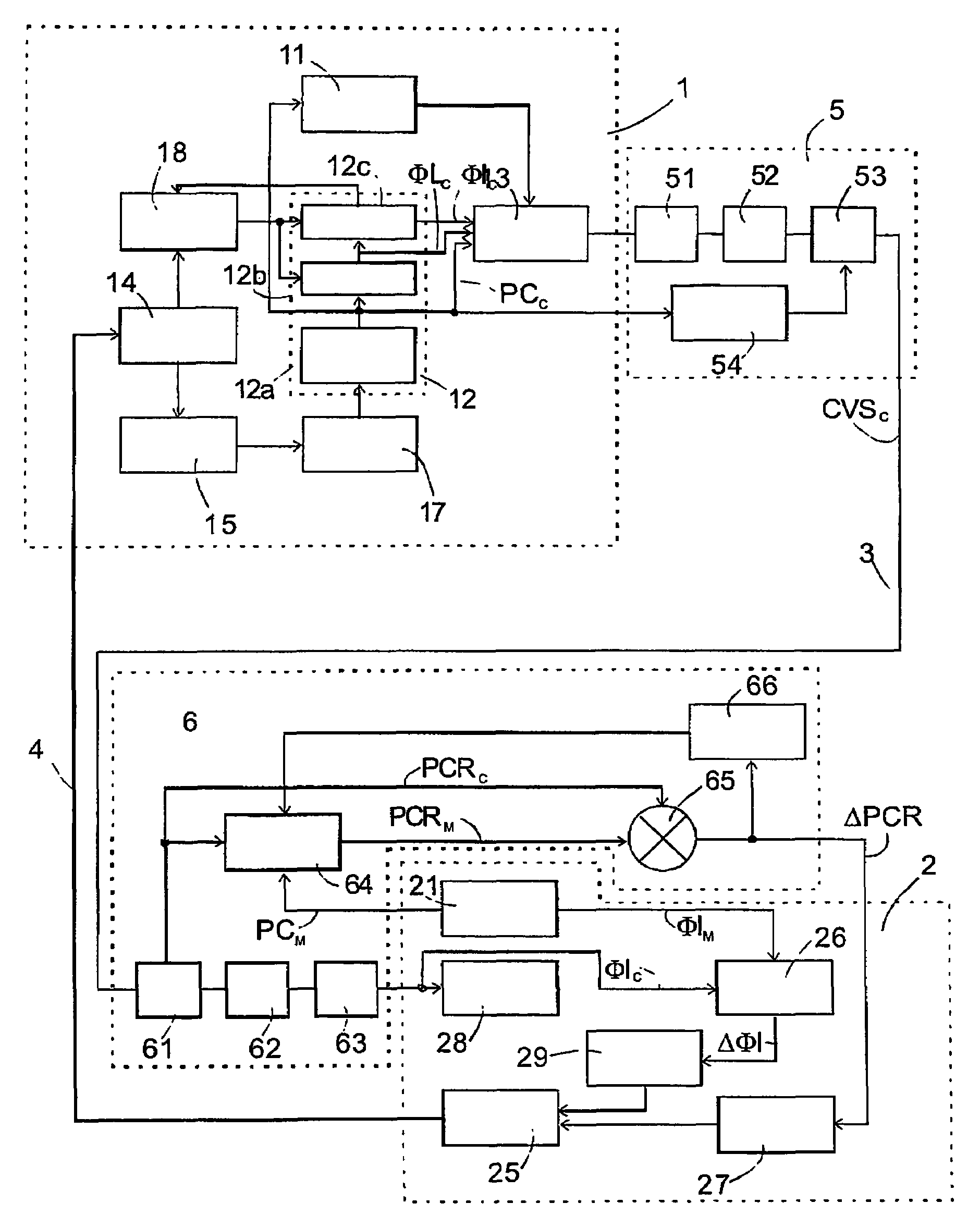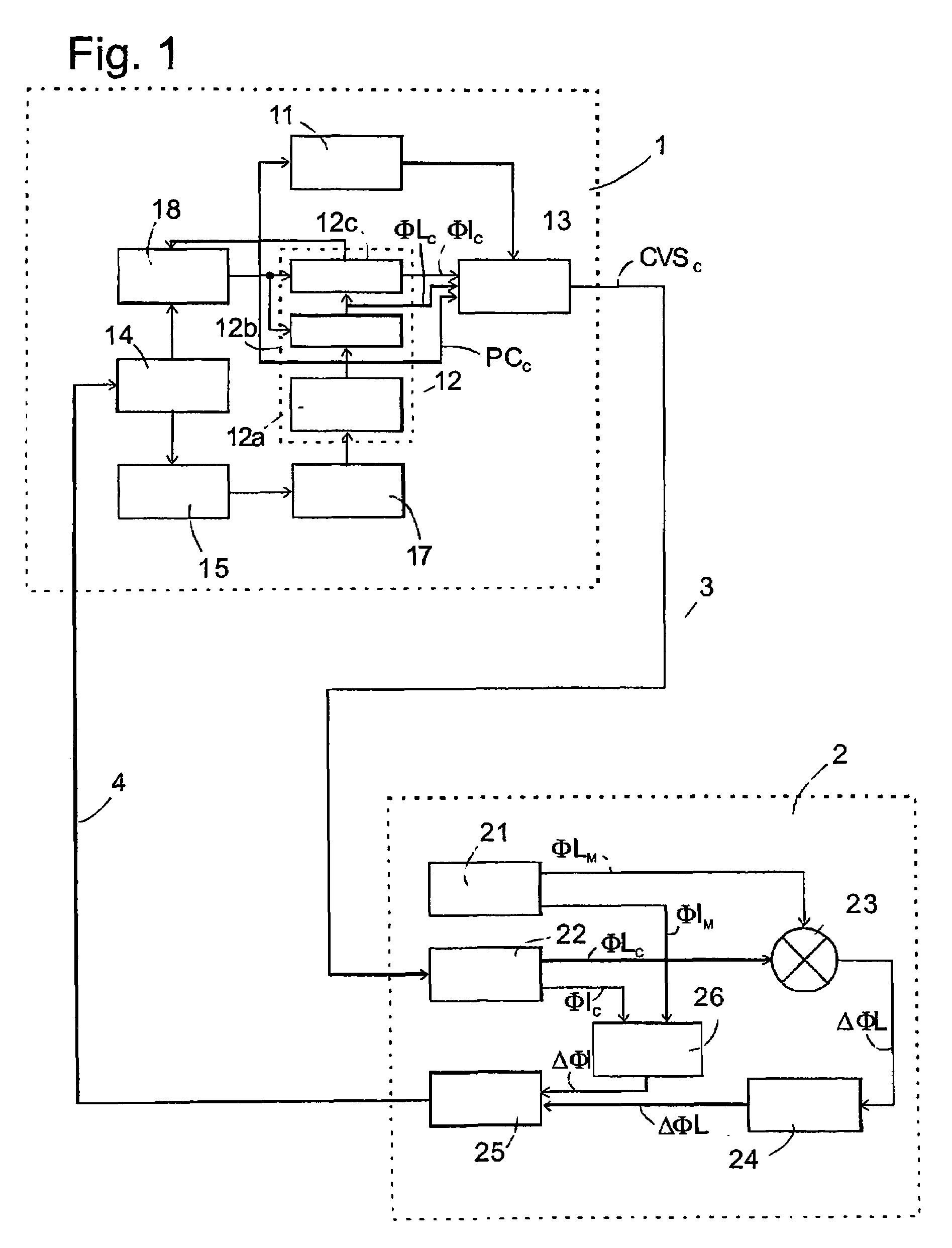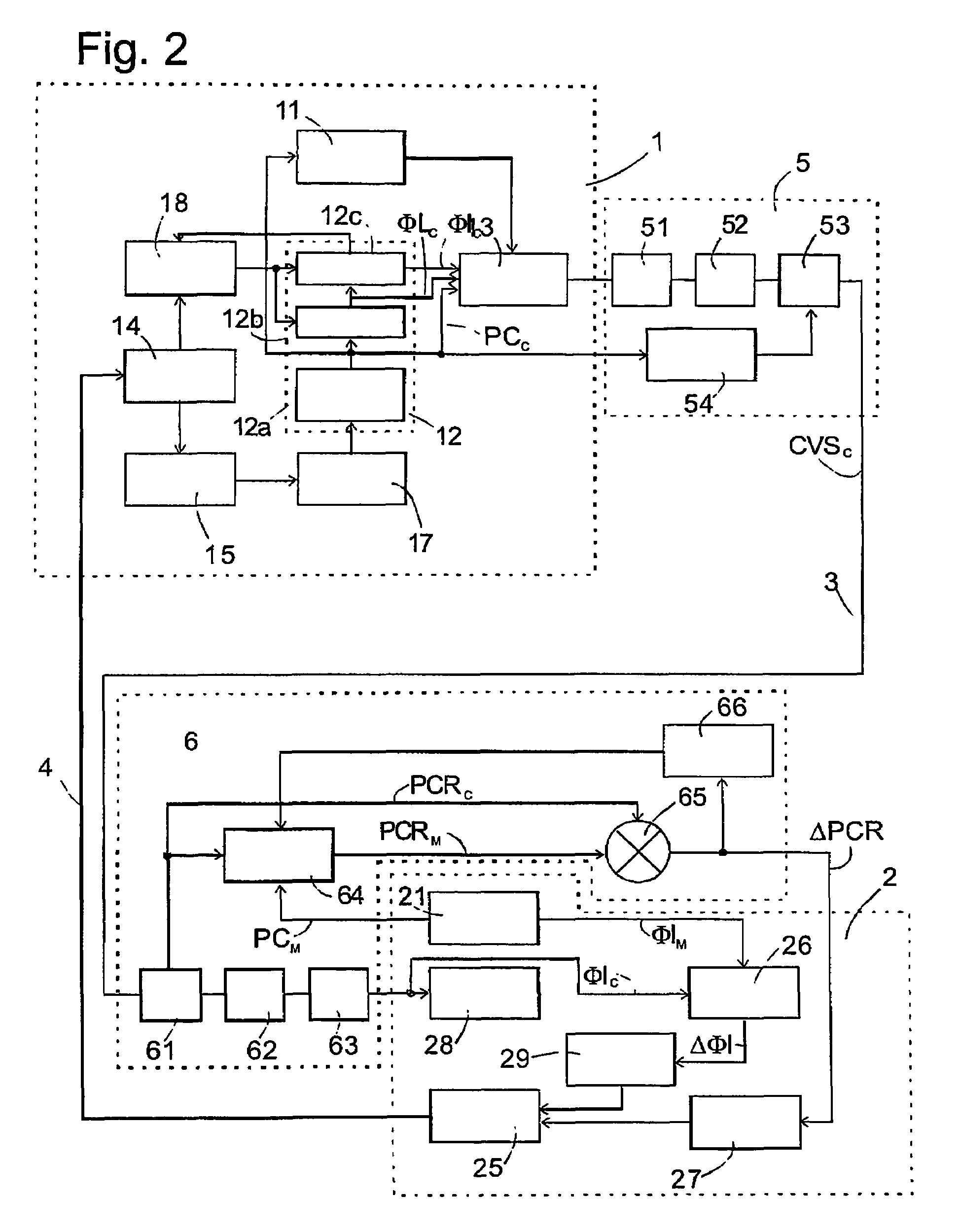Video device and method for synchronising time bases of video devices
- Summary
- Abstract
- Description
- Claims
- Application Information
AI Technical Summary
Benefits of technology
Problems solved by technology
Method used
Image
Examples
Embodiment Construction
[0052]In FIG. 1, the first video device is a camera 1, and the second video device is a receiving part (generally so called Base Station or Camera Control Unit) 2 which receives an analogue composite video signal from the camera 1 by a downlink transmission line 3, e.g. a coaxial wire, optical fiber, or wireless analogue transmission system, and sends video signal to the mixer (not shown) and control information to the camera 1 by an uplink transmission line 4, which may be a second coaxial wire, optical fibre, or wireless analogue transmission system. Although not shown, the mixer will generally have more than one input port for connecting a plurality of cameras or other sources of video signals by means of transmission lines which may vary in length and thus cause varying transmission delays between the image signal source and the CCU 2.
[0053]The camera 1 comprises an imager chip 11, e.g. a charge coupled device (CCD) onto which light from a scenery is incident and from which imag...
PUM
 Login to View More
Login to View More Abstract
Description
Claims
Application Information
 Login to View More
Login to View More - R&D
- Intellectual Property
- Life Sciences
- Materials
- Tech Scout
- Unparalleled Data Quality
- Higher Quality Content
- 60% Fewer Hallucinations
Browse by: Latest US Patents, China's latest patents, Technical Efficacy Thesaurus, Application Domain, Technology Topic, Popular Technical Reports.
© 2025 PatSnap. All rights reserved.Legal|Privacy policy|Modern Slavery Act Transparency Statement|Sitemap|About US| Contact US: help@patsnap.com



